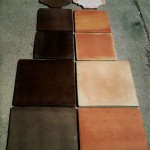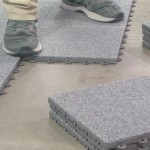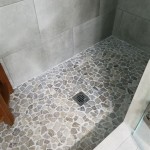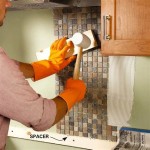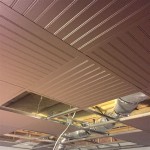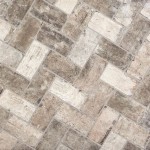How To Remove Bathroom Tiles Without Breaking Them
Removing bathroom tiles without breakage is a delicate task, requiring patience, the right tools, and careful execution. While it may seem counterintuitive, preserving the tiles during removal is often desired for reuse, repair projects, or simply to minimize waste and inconvenience. This article provides a detailed guide to the process of meticulously removing bathroom tiles with minimal damage.
The success of tile removal hinges on understanding how the tiles are adhered to the substrate. Most commonly, tiles are bonded with thin-set mortar, a cement-based adhesive applied between the tile and the underlying surface (typically cement backer board, drywall, or plaster). The strength and flexibility of the thin-set, along with variations in application thickness and the substrate itself, all influence the difficulty and outcome of the removal process.
Preparatory steps are critical for a successful, non-destructive tile removal endeavor. These steps involve assessing the area, gathering necessary tools, and protecting the surrounding environment from damage and dust.
Preparing the Area and Gathering Tools
Before initiating the removal process, a thorough inspection of the tiled surface is essential. This inspection should focus on identifying the type of grout used, the presence of any loose or already damaged tiles, and the condition of the surrounding walls and fixtures. This assessment will inform the choice of tools and techniques used during removal. For instance, epoxy grout is significantly harder to remove than cement-based grout and may necessitate specialized tools or techniques.
Protecting the surrounding surfaces is paramount. Cover the floor with drop cloths or heavy-duty plastic sheeting to prevent damage from falling tiles or debris. Mask off any adjacent walls, fixtures, or trim with painter's tape to safeguard against scratches or chipping. Consider creating a dust barrier by hanging plastic sheeting around the work area, especially if the bathroom is adjacent to living spaces. This will help contain the dust generated during grout removal and tile prying.
The tool selection is crucial. The following tools are commonly needed for tile removal:
- Grout Removal Tool: Options include a grout saw (manual or powered), a grout removal blade for an oscillating multi-tool, or a carbide-tipped scoring tool. The choice depends on the type of grout and the user's comfort level.
- Putty Knife or Scraper: A stiff, wide putty knife or scraper is used to gently pry tiles away from the substrate. Consider using a variety of sizes and shapes to accommodate different tile sizes and placements.
- Hammer: A small hammer may be needed to gently tap the putty knife or scraper to loosen the tiles. Use it sparingly and with caution to avoid tile breakage.
- Heat Gun or Hair Dryer: Applying heat can soften the thin-set mortar, making tile removal easier. A heat gun is more effective but requires careful handling to avoid overheating the tiles or substrate. A hair dryer provides a gentler, albeit slower, alternative.
- Safety Glasses: Essential for protecting the eyes from flying debris.
- Dust Mask or Respirator: Protects the lungs from dust inhalation, especially when removing old grout or tiles that may contain asbestos (particularly in older homes).
- Gloves: Protect hands from cuts and abrasions.
- Spray Bottle with Water: Used to dampen the grout, making it easier to remove and reducing dust.
- Small Chisel (Optional): May be helpful for removing stubborn tiles or working in tight spaces.
- Reciprocating Saw with a Flexible Blade (Optional): For tiles proving exceptionally difficult to remove, a reciprocating saw with a flexible blade can be inserted behind the tile to cut through the thin-set, however, this technique carries a higher risk of tile breakage and is generally employed as a last resort.
Ensuring adequate ventilation is important, especially when using power tools or working in a confined space. Open windows or use a fan to circulate air and minimize dust exposure.
Grout Removal Techniques
The first step in tile removal is to meticulously remove the grout surrounding each tile. This can be achieved through several methods, each with its own advantages and disadvantages.
Manual Grout Saw: A manual grout saw is a handheld tool with a coarse blade designed to grind away grout. It is a relatively inexpensive and low-dust option, but it requires significant physical effort and can be slow, especially for large areas or hard grout. The saw is used by repeatedly running the blade along the grout lines, applying moderate pressure, until the grout is removed down to the tile surface. Care must be taken to avoid scratching the edges of the tiles with the saw blade.
Oscillating Multi-Tool with Grout Removal Blade: An oscillating multi-tool equipped with a grout removal blade is a popular choice for its speed and efficiency. These tools use a vibrating blade to pulverize the grout, making removal much faster than with a manual saw. However, they can generate a significant amount of dust, so proper dust control measures are essential. It is crucial to hold the tool at the correct angle and apply consistent pressure to avoid damaging the tiles. Start with a slow speed and gradually increase it as needed, being mindful of the blade's tendency to "walk" out of the grout line.
Carbide-Tipped Scoring Tool: This tool uses a sharp carbide tip to score the grout lines repeatedly until the grout is weakened and can be chipped away. It is a less aggressive method than using a saw or multi-tool and is suitable for delicate tiles or intricate grout patterns. However, it can be time-consuming and requires careful attention to detail to avoid damaging the tiles.
Regardless of the chosen method, it's essential to work slowly and deliberately, focusing on removing all the grout without scratching or chipping the tile edges. Dampening the grout with water before and during removal can help to control dust and make the process easier. After the majority of grout is removed, use a utility knife or small scraper to clean out any remaining grout fragments.
Tile Removal and Thin-Set Softening
Once the grout has been completely removed, the next step is to carefully separate the tiles from the substrate. This involves using a putty knife or scraper to gently pry the tiles away, working gradually and methodically to avoid breakage.
Prying Technique: Begin by inserting the putty knife or scraper into the grout line between the tile and the substrate. Start at a corner or edge of the tile and gently tap the handle of the tool with a hammer to drive the blade further in. Apply steady pressure, rocking the tool back and forth, to loosen the tile. Avoid using excessive force, as this can easily crack the tile. Work your way around the perimeter of the tile, gradually loosening it from the substrate. If the tile is particularly stubborn, try inserting the putty knife from different angles and applying heat to soften the thin-set mortar.
Heat Application: Applying heat to the tile can soften the thin-set mortar, making it easier to remove the tile without breakage. A heat gun is the most effective tool for this purpose, but it must be used with caution to avoid overheating the tile or substrate. Hold the heat gun several inches away from the tile and move it slowly and evenly over the surface. Avoid focusing the heat on one spot for too long, as this can cause the tile to crack or scorch the substrate. A hair dryer can also be used as a gentler alternative, although it may take longer to achieve the desired effect.
Thin-Set Softening Agents: In some cases, specialized thin-set softening agents can be applied to the grout lines to dissolve or weaken the adhesive bond. These products typically contain chemicals that break down the cement-based mortar. Follow the manufacturer's instructions carefully when using these agents, as they may be corrosive or harmful if not handled properly. Wear appropriate protective gear, such as gloves and eye protection, and ensure adequate ventilation.
Addressing Stubborn Tiles: If a tile refuses to budge despite the above techniques, consider using a small chisel and hammer to carefully chip away at the thin-set mortar around the perimeter of the tile. Work slowly and deliberately, avoiding direct contact with the tile surface. As a last resort, a reciprocating saw with a flexible blade can be inserted behind the tile to cut through the thin-set. However, this technique carries a high risk of tile breakage and should only be used when all other options have been exhausted. After the tile is removed, the substrate will likely require preparation before installing new tiles. This may involve scraping off any remaining thin-set mortar, repairing any damage, and applying a primer to ensure proper adhesion.
By employing these techniques and exercising patience, it's possible to remove bathroom tiles without breaking them, preserving them for future use or minimizing waste. This careful approach ensures a more controlled and cost-effective renovation process.

How To Remove Floor And Wall Tiles Without Breaking Them

Easy Diy Guide On Removing Tiles From Walls Fantastic Handyman Au

How To Remove Tile Without Breaking

How To Remove Tile Without Breaking

How To Remove Wall Tiles

How To Remove Wall Tiles Without Breaking Them Wonkee Donkee Tools

How To Remove Wall Tiles Without Breaking Them Wonkee Donkee Tools

How To Remove Tiles Without Breaking Them

How To Remove Wall Tiles 11 Steps With Pictures Wikihow

Remove Wall Tiles Without Damaging Plasterboard
Related Posts

